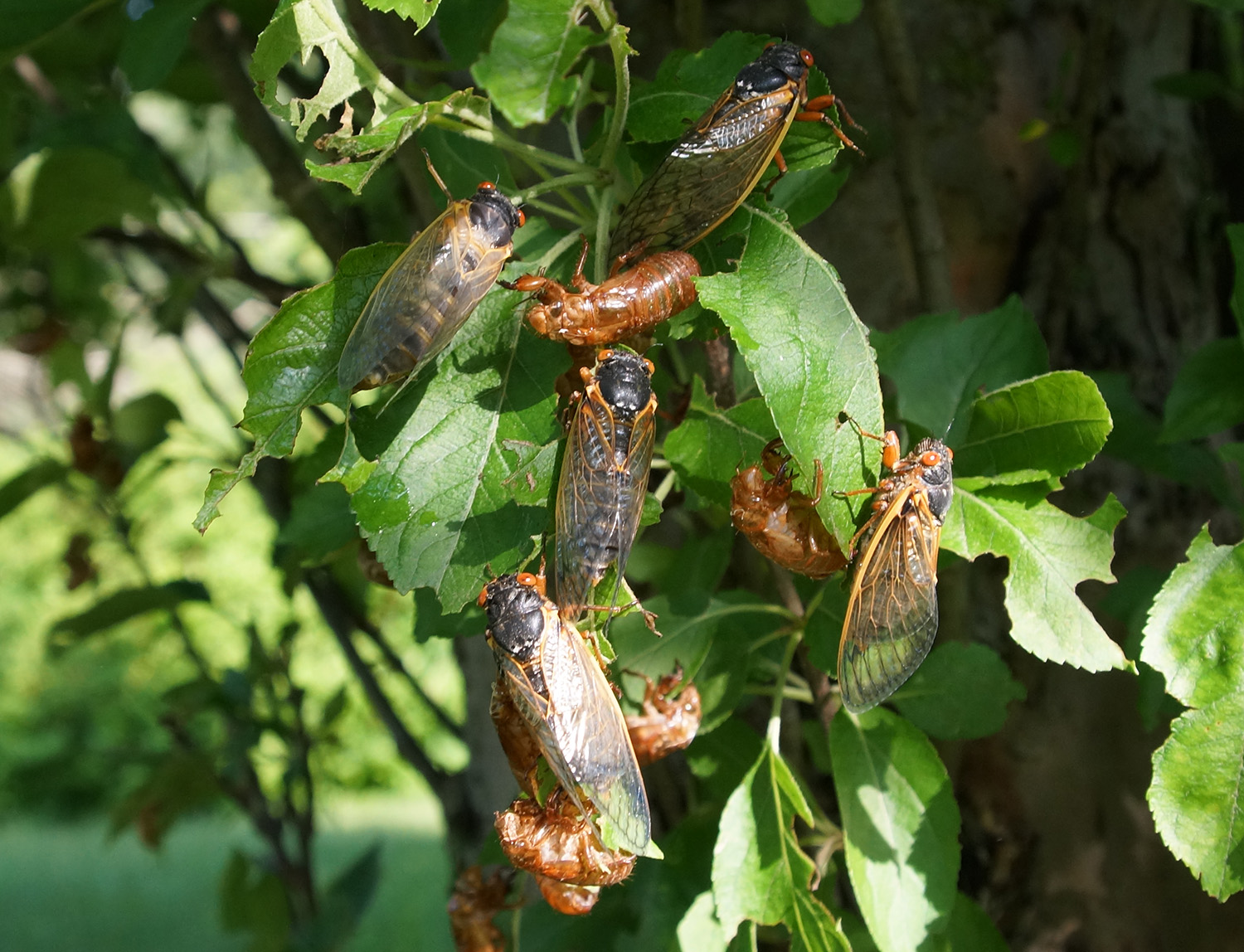
© Kevin AmbroseThis photo shows a group of cicadas that emerged from the ground Saturday night near Manassas, Virginia. The cicadas crawled out of their nymph skins during the overnight hours and patiently waited for their shells to harden and for their wings to expand and dry out.
For those of you who live in an area affected by Brood II of the periodical 17 year cicadas -
see map here - they have started to emerge. During this past weekend, the loud and clumsy bug was observed in counties just to the south of Washington.
I had a camp out scheduled with my kids this past weekend in central Prince William County and I knew that my campsite was located in Brood II country. I packed my camera hoping to find and photograph cicadas.
On Saturday afternoon, I arrived at the camping area near Manassas, Virginia and I looked in the trees for cicadas and their nymph shells. I found an apple tree that had a few nymph skins and one cicada. Most of the trees in the surrounding area, however, did not have cicadas.
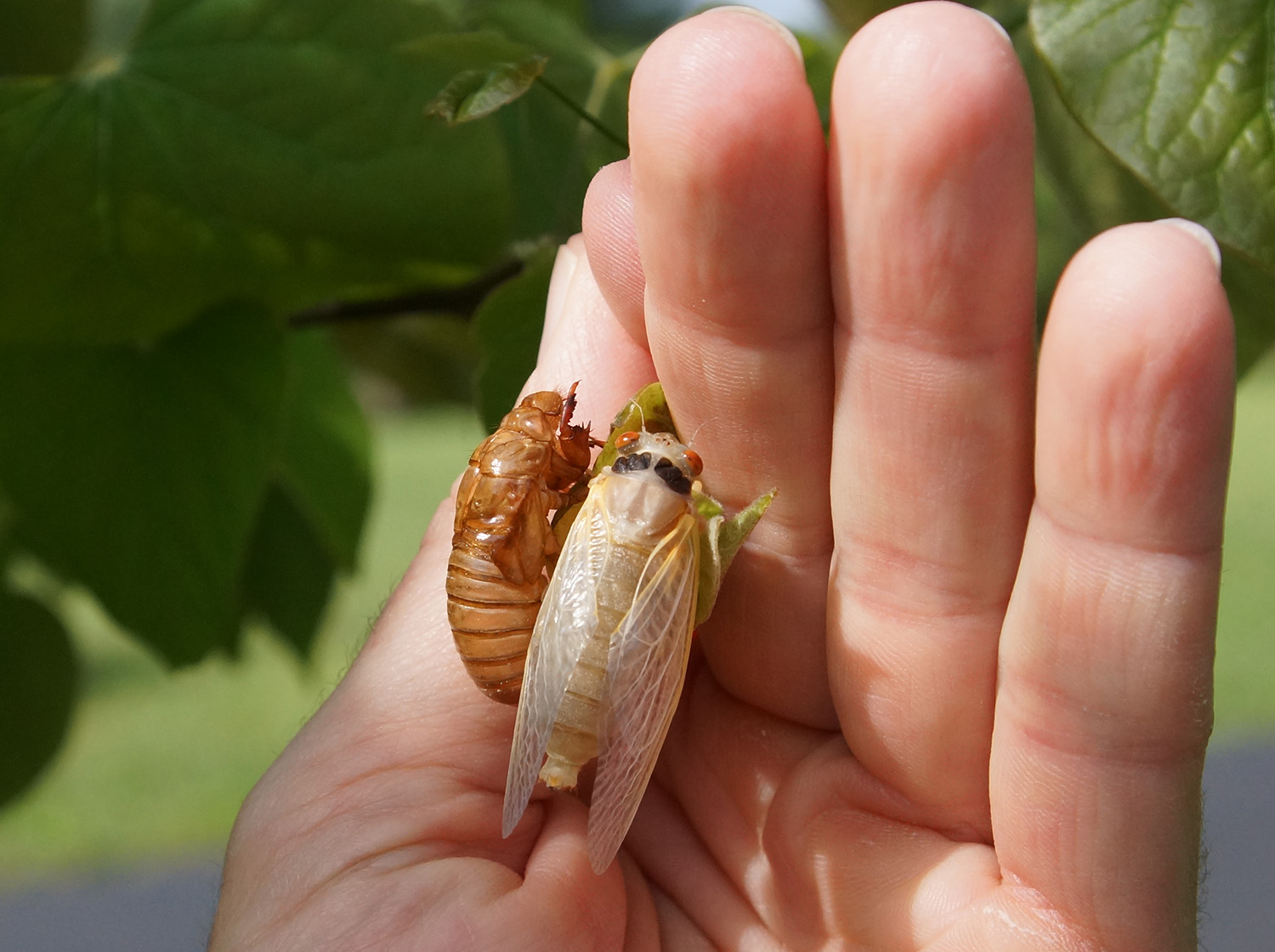
© Kevin AmbroseA milky-white cicada has just emerged from its nymph skin. The color of the cicada will darken as its shell hardens. For people who eat cicadas, this stage is the most tender and tasty. I've been told that cicadas taste like asparagus. Although I love asparagus, I have no desire to try a cicada.
Thunderstorms moved into the area late on Saturday and I was forced to stop my cicada search. I only found one bug before I had to turn my attention to taking cover from the approaching storms. I did get a cool lightning photo which is included at the bottom of this post.
On Sunday morning, I returned to the apple tree where I had found a few cicada nymph skins and one cicada during the previous day. The scene was much different in the morning. The lower branches of the tree were covered with dozens of nymph skins and cicadas. Apparently, Saturday night was a big night for the emerging cicadas.
Some of the nearby trees were also covered by cicadas. I found one white cicada that had just pulled free from its nymph skin. Cicadas turn darker in color as their outer shell hardens.
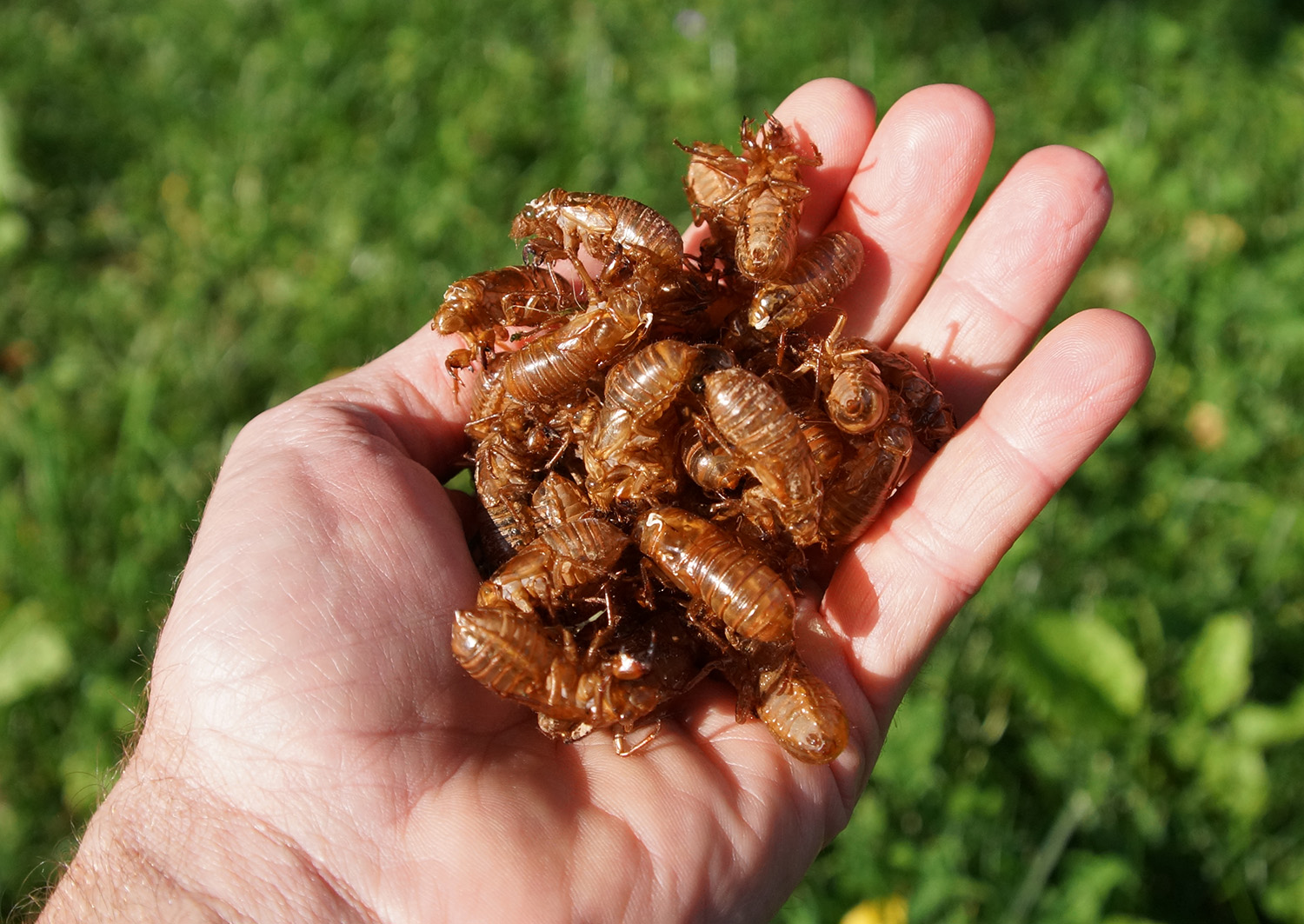
© Kevin AmbroseA handful of nymph skins that were shed by cicadas. These skins were still soft and squishy because they were shed only a few hours earlier during a rainy and stormy Saturday night.
During the morning hours, I took some photos and videos of the cicadas. The cicadas were not moving or flying. I tossed a couple of the bugs into the air and they could not fly, they just fluttered to the ground. I think their wings had not fully dried out and hardened. By the afternoon, however, they could fly quite well.
My kids were amazed and a little grossed out with how easily I handled the cicadas. I explained that I had seen a few cicada broods emerge in the past and I know from experience they don't bite. I told a
few cicada stories from when I was a kid including how I used to fly them like kites.
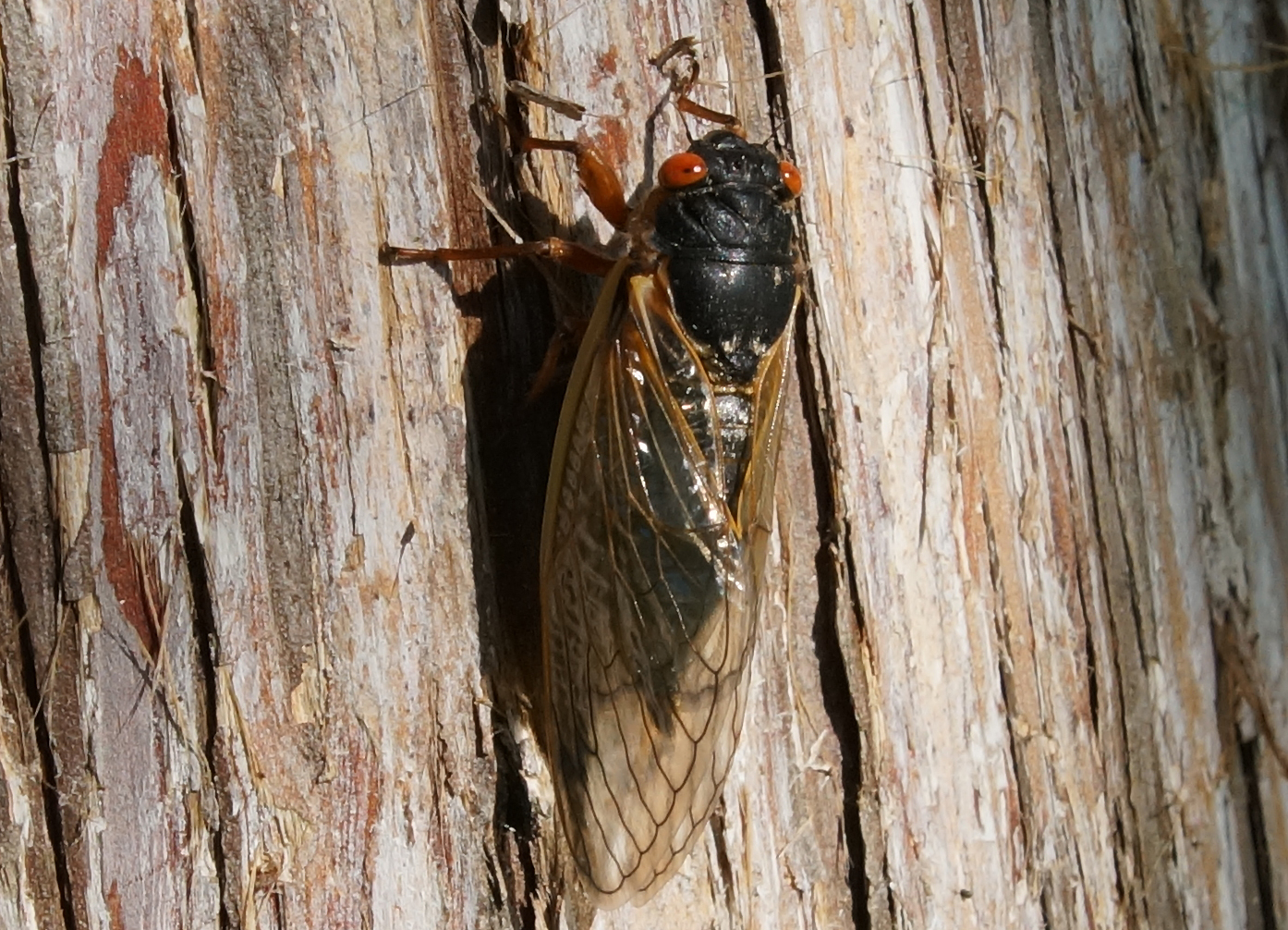
© Kevin AmbroseA close-up photo of a cicada that emerged Saturday night near Manassas, Virginia.
Cicadas are warm weather insects. They emerge only after
the ground temperature reaches the mid-60s. The cicadas don't get fooled into emerging during January thaws or during early spring warm spells. It will be interesting to see if tonight's near-freezing temperatures will harm the bugs that have already emerged.
I live in western Fairfax County, an area affected by Brood X back in 2004. Washington, D.C. also experienced Brood X. I doubt we'll see cicadas from Brood II in those areas. Here's a
map of the brood locations.
Let us know if you've seen cicadas this year. If so, please let us know the location.
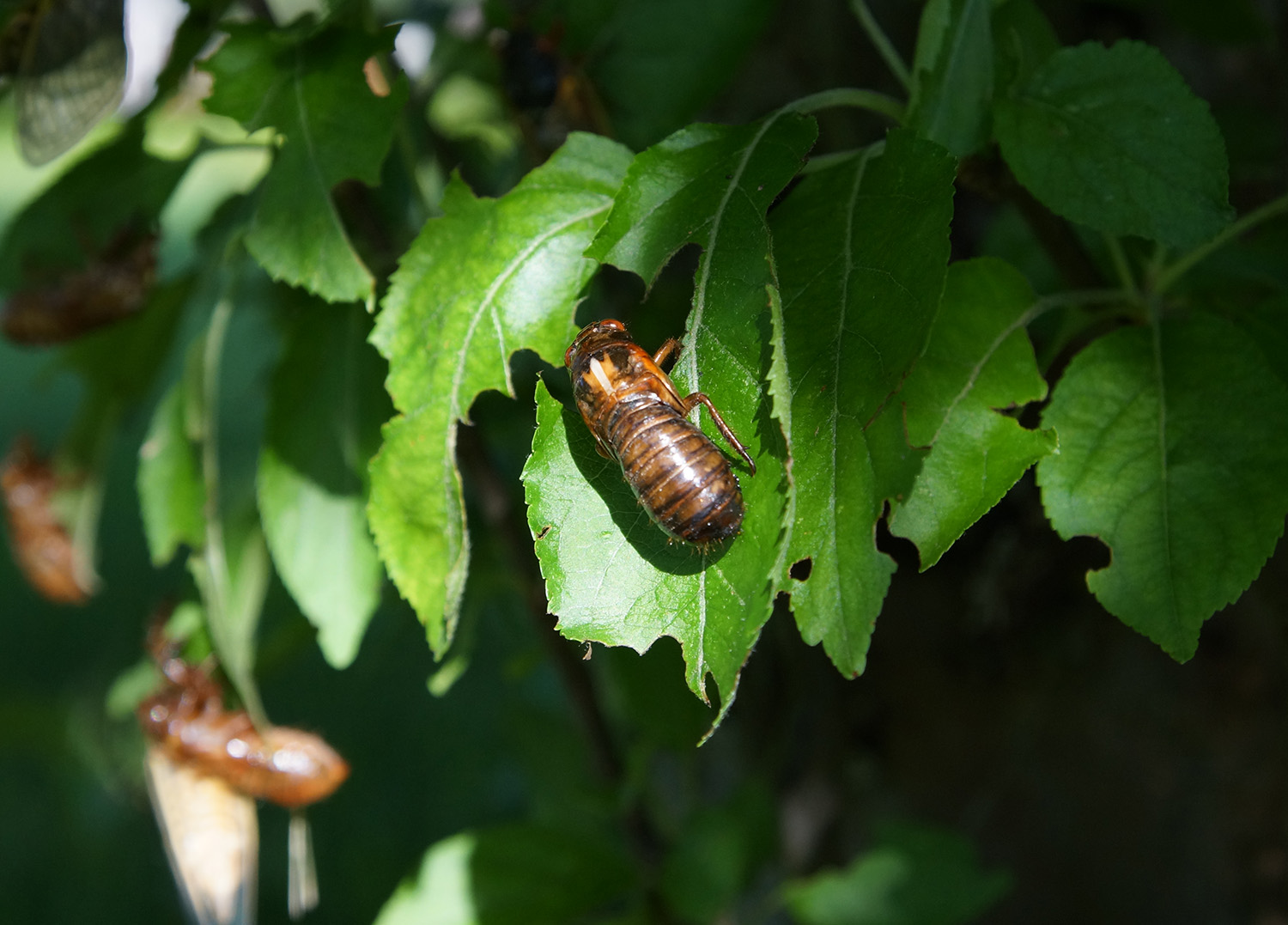
© Kevin AmbroseCicadas
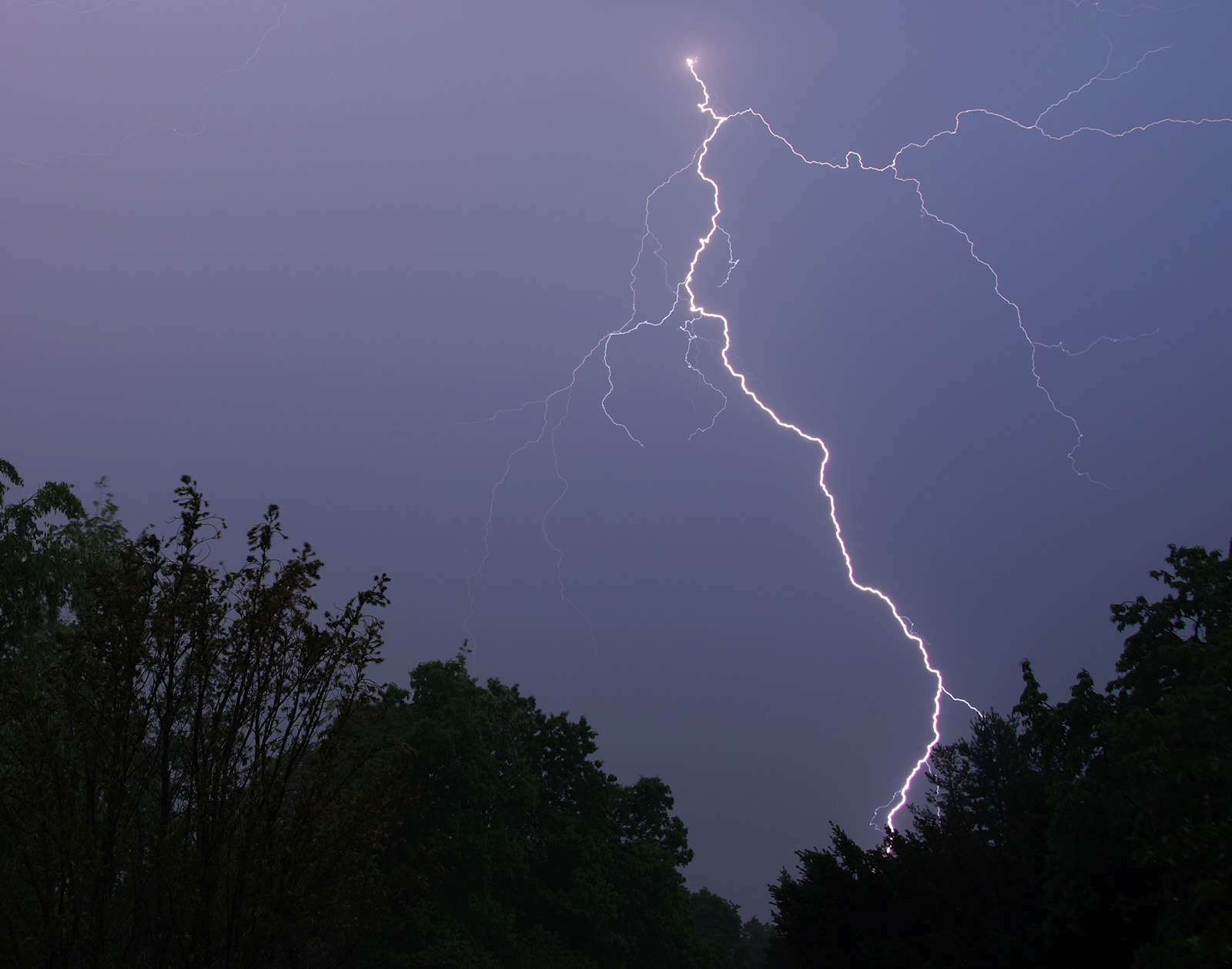
© Kevin AmbroseThe cicadas pictured in this post emerged during a rainy and stormy Saturday night. This photo was taken Saturday night near Manassas, Virginia at the same location where I photographed the cicadas.









Reader Comments
to our Newsletter